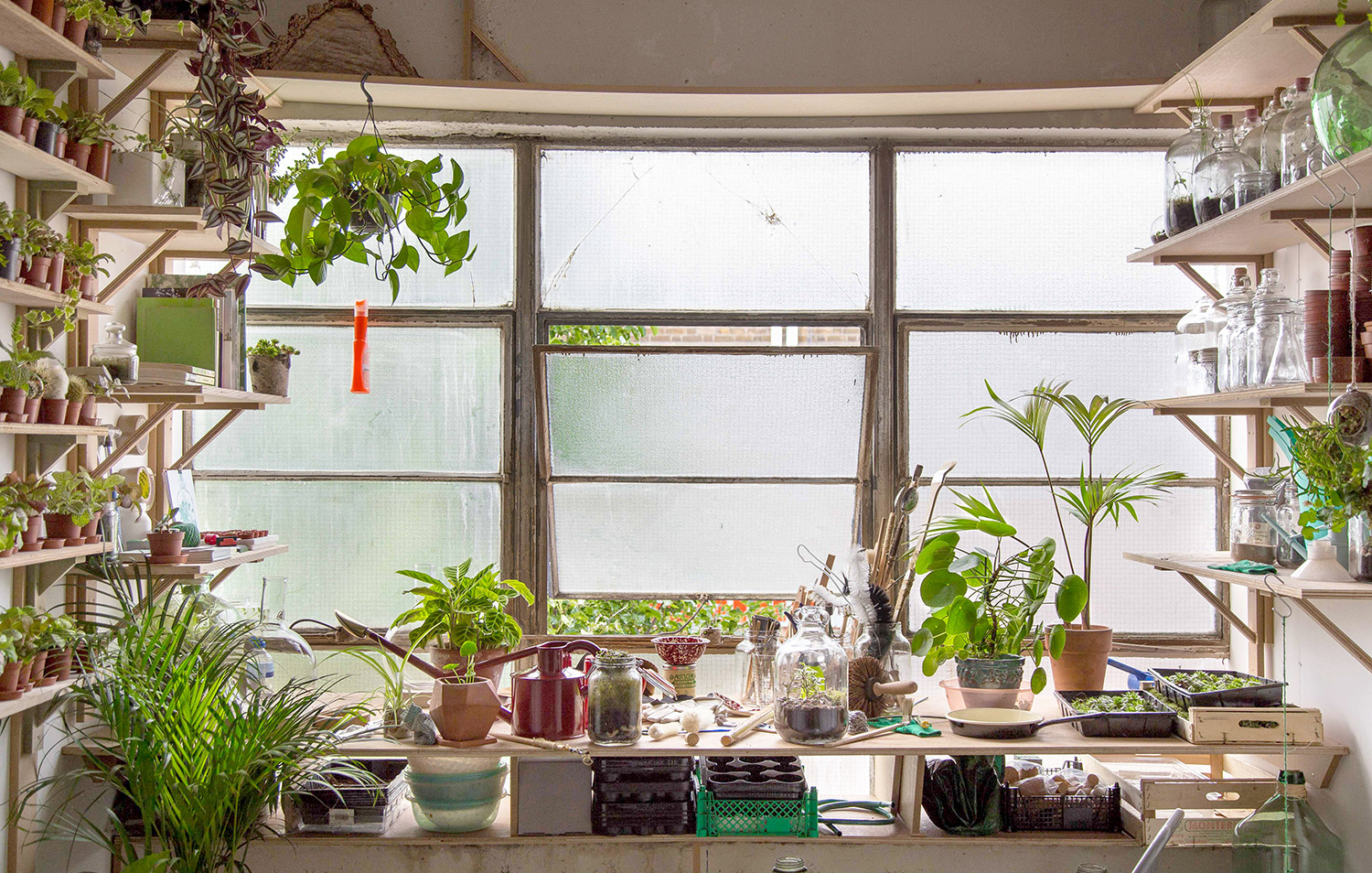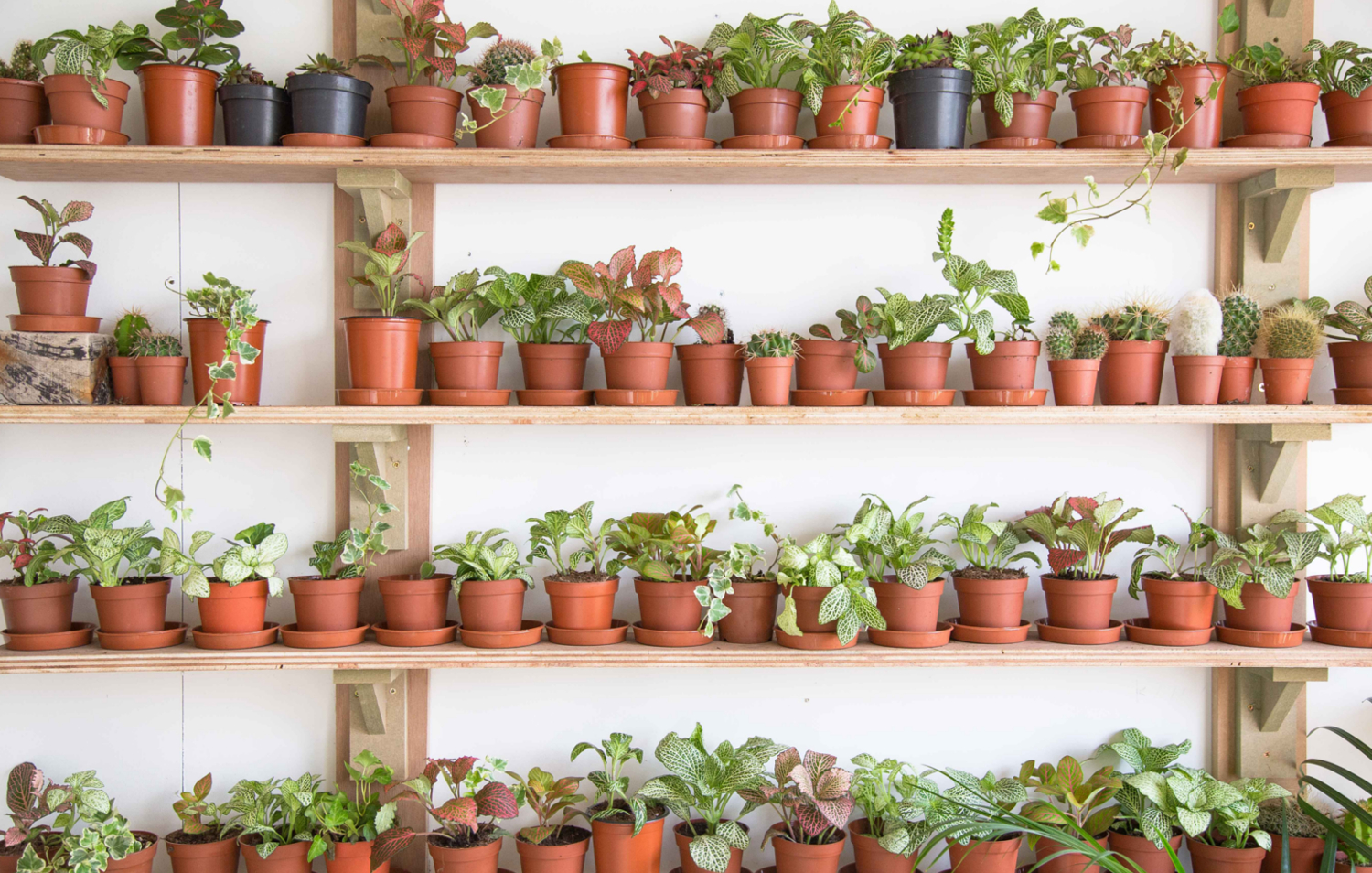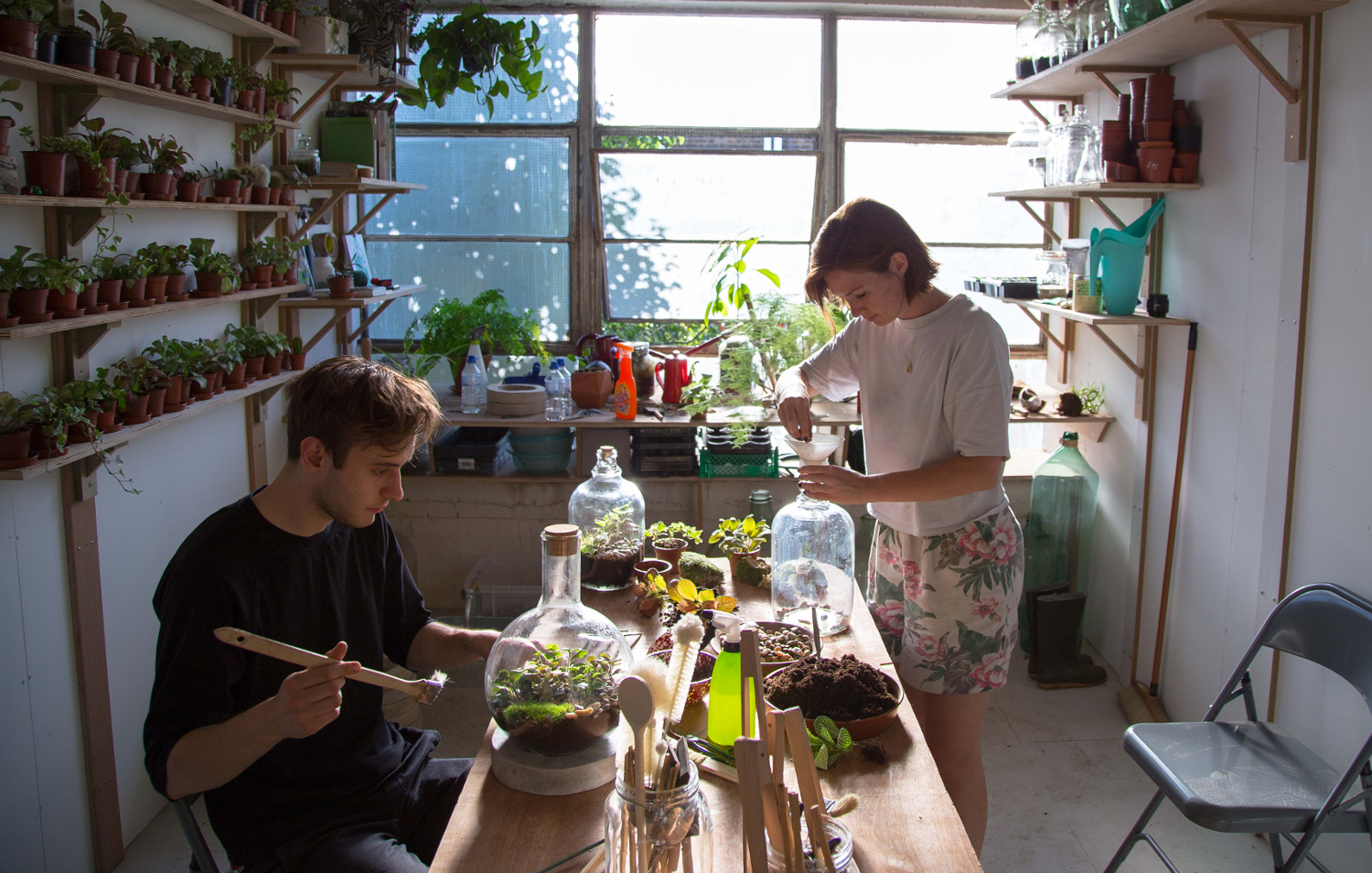In The Studio: London Terrariums
No stranger to Heal’s, we’ve been big fans of London Terrariums’ ever since they first hosted their workshops at our Tottenham Court Road store.
Since then this small botanical business has gone from strength to strength with a string of magazine features, window displays and even a talk at Nicer Tuesdays hosted by uber trendy design journal It’s Nice That. So what does the future hold for London Terrariums?
To find out, we took a trip to sunny South London to talk demijohns, Fittonias and moss (oh so much moss) with the lovely Emma and Thom.
—
How did London Terrariums all begin?
We started London Terrariums about 3 years ago one Saturday afternoon just using what we could find in the local area; stones and moss from my front garden and cuttings from our own house plants.
We used a pickle jar that we had lying around and soon realised that making terrariums was highly addictive, before we knew it both our houses were over flowing with these little eco-systems. We then started making for friends and then friends of friends and after a while we were making them for people we didn’t even know. It all happened without us really realising!
So where does LT call home?
We’ve had our studio in Bermondsey for about a year now. For us it is a really exciting area, we are surrounded by lots of other studios and work-spaces that have really creative things happening. Just the other day we turned up and there was a box of sand and soil outside our door with a little note saying ‘we thought this might come in handy for you!’ There’s a really nice open door feeling and everyone is really interested in what is going on and keen to help each other out.
What’s an average day in the studio like?
At the moment Saturday’s are our big studio days and they will quite often start with a workshop. This means an early rise and trip to New Covent Garden Flower Market and then back to the studio to get everything sorted and ready to take to the workshop venue.
These will usually take a few hours and we are normally back in the studio by mid-afternoon, packing away and organising again. Tom’s dad helped us build the interior of the studio, which was great as we were able to curate it how we liked with rows of small shelves for our plants, hooks for tools and a lovely large work desk. When it is tidy the studio is the best place to be!
“Making terrariums is highly addictive…
before we knew it our houses were
overflowing with little eco-systems.”
Then it is time to work out what’s happening the week ahead, this may mean we have to make some orders for people or organise an install, and usually we have to do a big order of vessels or corks or just make sure the moss is all healthy and watered.
What’s the design process behind your terrariums? Does it depend on the vessel, the plant, etc?
From what we have learnt so far about building a terrarium, it never goes to plan. You may have an idea of what you want a specific vessel to look like, but it always turns out differently!
The smaller vessels we use such as the demijohn and the tinyjohn have a select few plants that can be used, the small leaved Fittonias work really well with some moss and a few pebbles, it is really just a space issue with these as you need to leave room for the plants to grow.
Tom and myself we don’t really see a terrarium as finished after we have built it, the process is an on going development and growth of the plants inside the vessel. That it the most exciting part for us – not knowing how a terrarium will look after a few years as each vessel will turn out completely different.
Workshops are big part of LT. Is teaching people about terrariums an important part of what you do?
We are both still learning ourselves, so each workshop kind of develops from the previous one as we ourselves pick up new knowledge along the way. We didn’t start out with the intention of holding workshops, but now I would say they are our biggest avenue and our favourite part!
Showing people our hand made tools and teaching them the best way to get a large plant into a small vessel is so much fun. We want to show that making a terrarium is so accessible that you can create one using anything you have lying about the house, a jam jar, some compost and moss from the garden plus a cutting from one of your houseplants provide the perfect components to get you started.
Everything we teach at the workshop can be put into practice at home, our first tool was a stick with a cotton reel on one end and a corn on the cob skewer taped to the other, one for patting down the soil in the hard to reach places and the other for ‘jabbing’ things and getting them out again! It’s all pretty resourceful.
Mainly we love just passing on what we know and watching people get so protective over their own terrariums, after workshops. We have had panicked 1am emails from people with questions as to whether their terrarium is looking ok!
You have also made custom designs for some really interesting shops and venues. Which project are you most proud of?
This is a great part of the job as we get to use all the big terrariums and curate completely different displays with them, and each project throws new challenges at us as the lighting and temperate will always differ from place to place.
“That is the most exciting part for us,
not knowing how a terrarium will
look after a few years as each vessel
turns out completely different.”
One of our first installs was at an East London restaurant Merchants Tavern about 2 years ago and this was so exciting. The space, however, was quite dark so we used carboys and a lot of plants which would be ok in low lighting. After this we also installed in Heal’s on Tottenham Court Road, which seemed to be the perfect conditions for the terrariums to thrive in, the first floor showroom hosted a few of the vessels and it was great watching the plants grow in them over time.
I think we are most proud of our most recent install though. Just before Christmas we took over the windows of concept store The Dandy Lab, using our exclusive Science Vessel Terrariums and introducing some hanging mossariums made especially for the space. It was great dressing the windows with around 20 of our terrariums and arranging them.
As any follower of interior trends knows, houseplants have made a big comeback the last couple of seasons. What do you think sets London Terrariums apart?
I think it is our enthusiasm for what we do and our interest in how these ecosystems actually work. There are a lot of other terrariums makers out there, however some of them seem to be very ornamental, and static, apposed to actually a living self-sustaining cycle.
For us, a cactus in an open glass bowl is not a terrarium. There is no science behind that you have just potted a plant. But if you get some moss on a bed of compost in a closed jam jar you have yourself a terrarium to watch develop. We have sealed terrariums which have been alive for three or more years and they are thriving.
“Sometimes we even have panicked 1am
emails from people with questions as to
whether their terrarium is looking ok!”
These may not seem that beautiful to some people as they will be very mossy and overgrown, but we love them because for us this is the proof that what we are doing is working.
What are your plans for the future? Any exciting new projects in the pipeline?
We plan to push the workshops much further. We have just had a discussion about doing a terrarium supper club collaboration which would work so well as most of the tools we use originated from our kitchens.
There are also a lot more big installs coming up and we will be hosting workshops and talks in the summer at GROW London and BBC Gardeners World Live, which has gone down very well with my grandparents!
Further Reading:
www.londonterrariums.com





